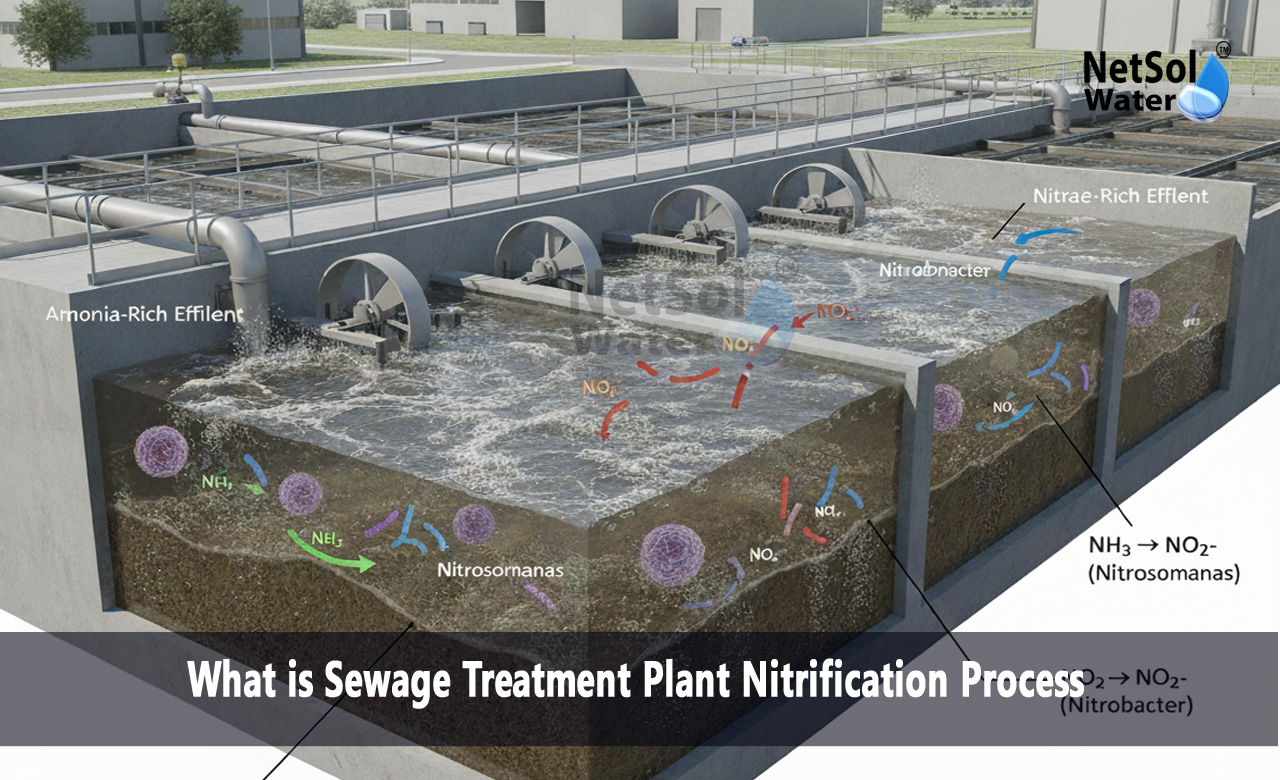What is Sewage Treatment Plant Nitrification Process?
Ever wondered about the journey of wastewater after it leaves your home? It doesn't simply disappear. Instead it undergoes a proper treatment process before returning to nature. Nitrification, a significant element in this process happens at sewage treatment plants. Let's discuss nitrification and explore how it cleans our wastewater.
What is Nitrification?
Nitrification changes ammonia into nitrate by biological mechanisms. It plays a critical part in the natural nitrogen cycle and wastewater treatment. When wastewater enters treatment plants it carries substantial quantities of ammonia which can affect aquatic habitats. Nitrification handles this problem by converting ammonia into less dangerous nitrogen forms.
The technique contains two main steps. First ammonia-oxidizing bacteria transform ammonia to nitrite. Then nitrite-oxidizing bacteria convert nitrite to nitrate. These minuscule bacteria work hard in the sewage treatment process.
The Importance of Nitrification in Sewage Treatment
Nitrification undertakes various critical functions. It decreases the oxygen requirement of wastewater making it safer for release into waterways. It also decreases nitrogen which can create algal blooms and damage aquatic habitats. Without nitrification our streams would face more threats of contamination and environmental degradation.
Moreover nitrification enhances the overall quality of treated wastewater. It eliminates unpleasant odors and makes the water cleaner. This becomes more relevant when we utilize treated wastewater for agriculture or industrial usage.
The Nitrification Process Step by Step
Let's break down how nitrification works:
1. Ammonia Oxidation: In this first step ammonia-oxidizing bacteria called Nitrosomonas transform ammonia into nitrite. They use oxygen to oxidize ammonia. We may simplify the response like this:
NH?? + 1.5 O? → NO?? + 2H? + H?O
2. Nitrite Oxidation: During the second step nitrite-oxidizing bacteria like Nitrobacter transform nitrite into nitrate. We can show this reaction as:
NO?? + 0.5 O? → NO??
While these interactions look simple on paper they emerge from intricate biological mechanisms functioning at a microscopic level.
Factors Affecting Nitrification
Several factors affect how efficiently nitrification works in sewage treatment plants:
Temperature: Nitrifying bacteria perform best between 20-35°C. Cold temperatures slow down the process greatly.
pH: Nitrification occurs optimally in a pH range of 7.5 to 8.5. If the pH goes too low or climbs too high it can inhibit bacterial activity.
Dissolved Oxygen: Nitrifying bacteria need oxygen to function. Low dissolved oxygen levels can slow or prohibit nitrification.
Organic Loading: High volumes of organic wastecan fight with nitrifying bacteria for oxygen slowing down the process.
Toxic chemicals: Some substances can poison nitrifying bacteria halting the process.
Plant operators must hold these aspects to keep conditions optimal for nitrification.
Types of Nitrification Systems
Sewage treatment plants utilize different systems to support nitrification:
Activated Sludge Process: This usual technique mixes wastewater with a concentrated group of microorganisms including nitrifying bacteria. The mixture gets aerated to supply oxygen for the bacteria.
Trickling Filters: These consist of beds created from coarse material like rocks or plastic. Operators sprinkle wastewater over the bed letting it flow down. Bacteria develop on the media surface forming a biofilm that treats the water as it flows through.
Rotating Biological Contactors: These feature large discs set on a rotating shaft. The discs partially dip into wastewater and rotate gently allowing bacteria to grow on their surfaces.
Each system has its merits and cons. Factors like plant size budget and geographical limits dictate the option.
Monitoring and Control of Nitrification
Effective nitrification requires careful monitoring and administration. Plant operators utilize numerous methods to track the process:
Ammonia and Nitrate Testing: Regular monitoring of ammonia and nitrate levels help operators determine nitrification performance.
Dissolved Oxygen Monitoring: Keeping enough dissolved oxygen is important for nitrifying microorganisms.
pH Control: Operators must maintain pH within the correct range often by adding chemicals to adjust it.
Temperature Monitoring: In colder places heating systems may sustain temperatures optimum for nitrification.
Advanced facilities incorporate automated technologies to monitor and manage important parameters for consistent operation.
Conclusion
Nitrification plays an important purpose in sewage treatment. It uses the capacity of microscopic microbes to clean our wastewater and protect our environment. From the beginning of the nitrogen cycle to nitrification highlights how biology chemistry and engineering work together to overcome environmental concerns.
As we are experiencing water restriction and pollution concerns worldwide the requirement for efficient wastewater treatment rises. Understanding and improving processes like nitrification can help ensure clean water for future generations.
To explore customised commercial RO plants, Industrial RO plants, ETP or STP solutions for your needs in your areas and nearby regions, Contact Netsol Water at:
Phone: +91-965-060-8473, Email: enquiry@netsolwater.com



